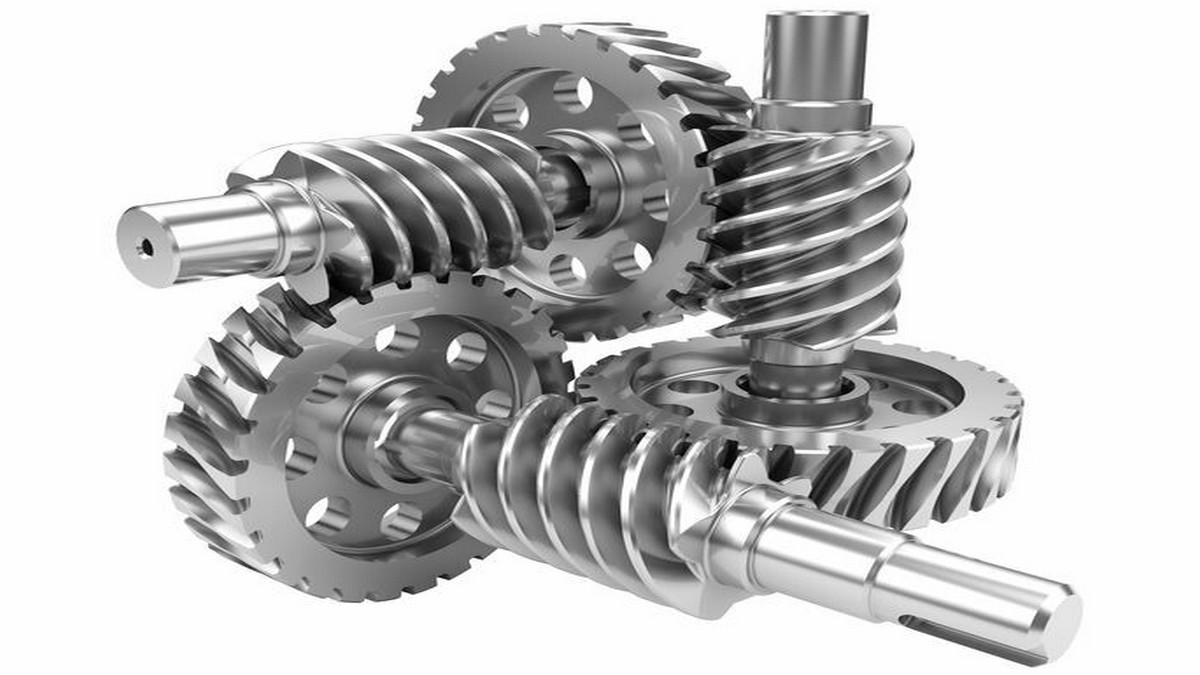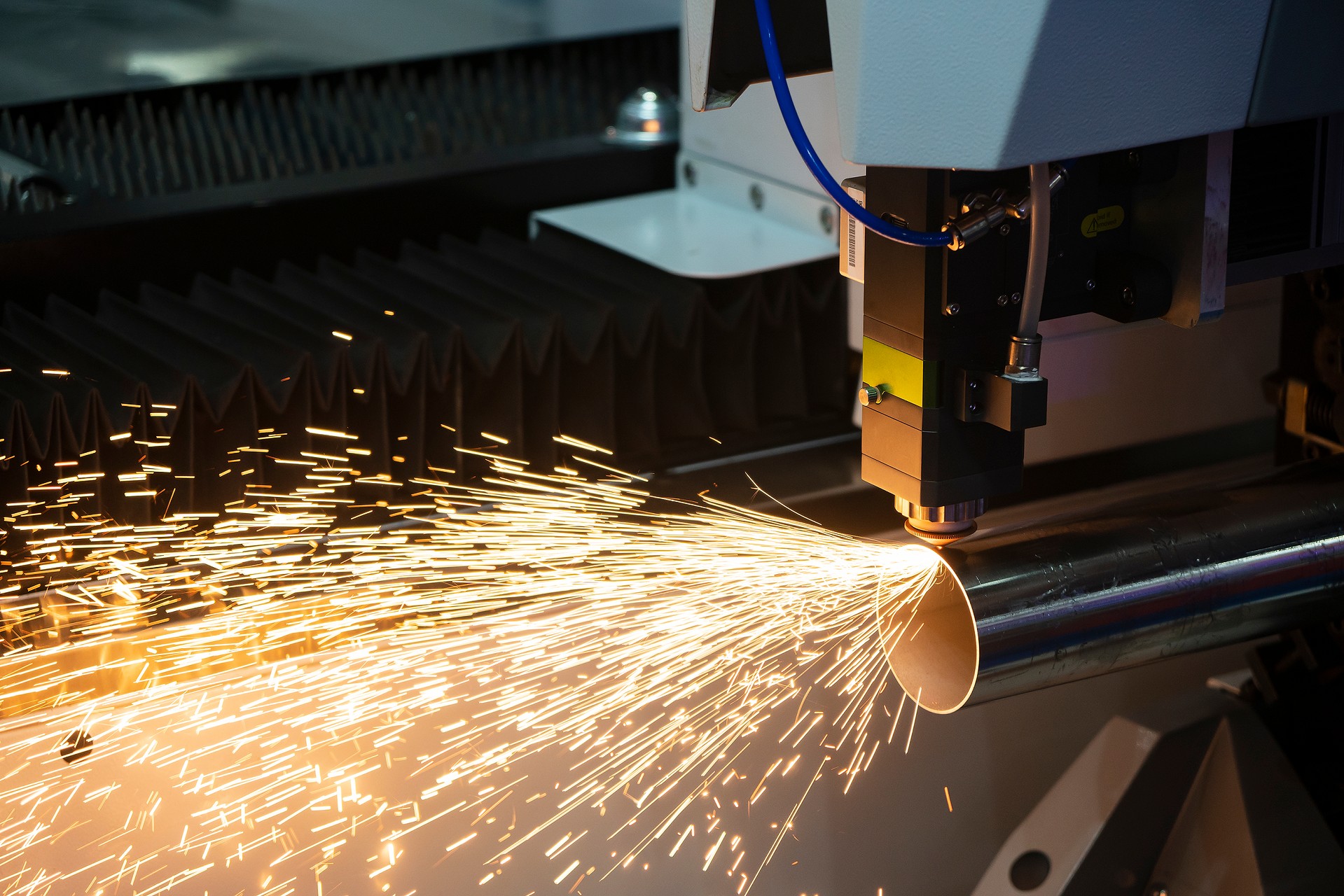The spiral is usually a cylinder or a round hole with uneven helical stripes on the surface. The cylinder is called a screw, the round hole is a nut, and the helical stripes are a thread.
What is a Screw?
A cylinder with spiral grooves cut on the outer surface of the screw or a cone cut with spiral grooves on the conical surface. The screws have different heads, such as large flat screws, hexagon socket screws, etc.
The Use of Screws:
It is mostly used in plastic molding equipment, such as plastic profile extruders, injection molding machines, etc. The screw and barrel are the core components of plastic molding equipment, the part of heating extrusion plasticization, and the core of plastic machinery.
The Design Principle of the Screw:
The part of the pin screw is an ordinary screw, and the pin can be set in the melting section of the screw or the drop groove of the metering section, or on the smooth cylindrical surface without a screw groove at the end of the metering section. The pins are set according to a certain arrangement, which can vary in density and quantity. Cylindrical pins are formed by fitting the pin into the hole of the screw. Square or diamond-shaped pins are milled directly on the screw. If these pins are set in the melting zone, the pins can break the solid bed, destroy the two-phase flow, and stir the solid and liquid phases together. Increase the contact area between the undissolved solid phase fragments and the contained materials, and promote molten. If the pin is set in the melt delivery area, its main function is to divide the material flow, increase the interface, change the direction of the material flow, and rearrange the flow. Split and merge multiple times, change the flow direction, and homogenize the melt components and temperature. The mixing section is an inward grooved structure set at the end of the homogenizing section of the common screw, and its outer diameter is equal to the outer diameter of the screw. The grooves are divided into several groups, and between each group is the confluence area of materials. The material is divided by the groove, meets in the confluence area, and then divided and merged. The principle is similar to the pin type. The characteristic of the separated screw is that in addition to the original thread on the melting section, there is an additional thread whose outer diameter is slightly smaller than the outer diameter of the thread. The lead of the auxiliary threads is different. The auxiliary thread starts from the end of the feeding section after several threads, it gradually intersects with the main thread of the homogenizing section. The groove depth and thread lead of this screw are gradually changed from the feeding section to the end of homogenization. The thread lead gradually narrows from wide, and the screw groove depth gradually becomes shallow from depth, so that the material can be compressed to the maximum.
What is a Ball Screw?
Ball screw is a kind of transmission mechanical component in which steel balls move between the nut and the screw, converting the sliding contact of the traditional screw into rolling contact, and then converting the rotary motion of the steel ball in the nut into linear motion. The ball screw has the characteristics of high positioning accuracy, long life, and low pollution, and can be used for high-speed forward and reverse transmission and conversion transmission.
The ball screw is composed of a screw, nut, steel ball, fixed seat, wiper, and return pipe. According to the different circulation systems, it is further divided into external circulation type, internal circulation type, and end plug circulation type ball screw. Due to the above characteristics, the ball screw has become one of the important components in the positioning and measuring system of the precision technology industry and the precision machinery industry.
What is a Lead Screw?
The lead screw is composed of a screw rod and one or several nut sliders matched with the screw rod and is used to convert the rotary motion of the screw rod into the constant speed linear motion of the nut sliders. The lead screw has the characteristics of precise transmission, so it is widely used in precision transmission devices, such as lathes and comprehensive processing machines. Lead screws are used for precision positioning and transmission of measuring tools. Compared with general thread measurement, lead screw thread measurement requires much higher precision.
What is a Feed Screw?
Metric threads can be divided into coarse thread and fine thread. The grades are distinguished by the machining accuracy of the thread. Use the principle of the screw to achieve the effect of linear motion, and because the screw advances one turn, it is exactly equal to the distance of 1 PITCH, so if 1 PITCH is equal to 0.5mm, it means that it rotates one turn, and the feed screw advances or retreats 0.5mm. Used to adjust the length, distance, or measurement.
What is the Spiral Mechanism?
A screw mechanism is capable of transforming rotational motion into linear motion and torque into linear force. Using this force transmission mechanism, the force can be amplified, and a small rotational force applied to the shaft can be transformed into a larger axial force. Pitch is the axial distance between two adjacent threads. The smaller the pitch, the greater the mechanical advantage, the greater the ratio of output force to input force.
Requirements for the Material of the Screw:
The screw works under high temperatures, certain corrosion, strong wear, and high torque, so the following material requirements are required:
- High-temperature resistance, no deformation under high temperature.
- Wear resistance and long life.
- Corrosion resistance, the material is corrosive.
- High strength, can withstand high torque and high speed.
- It has good cutting performance.
- After heat treatment, the residual stress is small, and the thermal deformation is small.
The Stress of the Screw:
The screw is generally scrapped due to long-term wear, the gap between the screw and the barrel is too large and cannot be extruded normally, but there is damage caused by working stress exceeding the strength limit due to improper design or operation. Therefore, the screw should meet certain strength requirements.
- Self-weight G.
- Torque M is required to overcome material resistance.
- Axial force P generated by material pressure.
- The dangerous section of the screw is generally at the point where the root diameter of the thread in the feeding section is the smallest.
Process of Extruder Screw:
The movement of the material in the screw of the extruder is divided into three sections, so the design of the screw is often carried out in sections. Since each section is a continuous channel, in actual production, as long as the requirements can be met, it is not necessary to divide the screw into three sections. Some screws have only two sections, and some are not divided into sections. When extruding a material with good crystallinity such as nylon, there is only a feeding section and a homogenizing section. For a general screw extruding a soft PVC plastic screw, the entire compression section can be used instead of being divided into a feeding section and a homogenizing section. The segmented type of screw is obtained from experience and mainly depends on the nature of the material. The length of the feeding section can range from 0 to 75% of the total length of the screw. It is the longest when extruding crystalline polymers, followed by hard amorphous polymers, and the shortest for soft amorphous polymers. The length of the compression section usually accounts for 50% of the total length of the screw, except for the above-mentioned nylon and soft polyvinyl chloride plastics. When extruding polyethylene, the length of the homogenization section can be 20-25% of the total length. However, for some heat-sensitive materials, the material should not stay in this section for too long, and the homogenization section can be omitted. Some high-speed extruders take 50% of the length of the homogenization section.
Causes of Screw Wear:
- Each plastic has an ideal plasticizing processing temperature range, and the processing temperature of the barrel should be controlled to make it close to this temperature range. When the granular plastic enters the barrel from the hopper, it will first reach the feeding section, and dry friction will inevitably occur in the feeding section. When these plastics are not heated enough and melt unevenly, it is easy to cause increased wear on the inner wall of the barrel and the surface of the screw. Similarly, in the compression section and homogenization section, if the molten state of the plastic is disordered and uneven, it will cause faster wear.
- The speed should be adjusted properly. Because some plastics are added with reinforcements, such as glass fibers, minerals, or other fillers. These substances tend to be much more abrasive to metallic materials than molten plastics. When injecting these plastics, if it is made at a high speed, while increasing the shearing force on the plastic, it will make the reinforcement correspondingly produce more shredded fibers. The shredded fibers contain sharp ends, causing wear and tear. The force is increased. When inorganic minerals slide at high speed on the metal surface, their scraping effect is not small. So, the speed should not be adjusted too high.
- The screw rotates in the barrel, and the friction between the material and the two causes the working surface of the screw and the barrel to wear gradually, the diameter of the screw gradually decreases, and the diameter of the inner hole of the barrel gradually increases. The matching diameter gap between the screw and the barrel increases little by little with the gradual wear of the two. Since the resistance of the head and the diverter plate in front of the barrel has not changed, this increases the leakage flow when the extruded material advances. The flow of the material from the diameter gap to the feeding direction increases. As a result, the output of plastic machinery has declined. This phenomenon increases the residence time of the material in the barrel, causing the material to decompose. If it is polyvinyl chloride, the hydrogen chloride gas generated by the decomposition strengthens the corrosion of the screw and barrel.
- If there are fillers such as calcium carbonate and glass fiber in the material, it can accelerate the wear of the screw and barrel.
- Because the material is not plasticized evenly, or metal foreign matter is mixed into the material, the torque of the screw suddenly increases, and this torque exceeds the strength limit of the screw, causing the screw to break. This is unconventional accident damage.
Screw Maintenance Precautions:
- When the screw does not reach the preset temperature, do not start the machine.
- Prevent metal fragments and sundries from falling into the hopper. If recycled materials are processed, a magnetic hopper is required to prevent iron filings from entering the hopper.
- When using the anti-spill, make sure that the plastic in the barrel is completely melted, so as not to damage the transmission system parts when the screw moves back.
- When using new plastic, the rest of the screw should be cleaned.
- When the temperature of the molten plastic is normal but black spots or discoloration of the molten plastic are continuously found, the screw should be checked.
- During processing, try to make the material plasticized evenly, and do not let metal foreign matter mix into the material, to reduce the torque of screw rotation.














